How to reduce image file size
Modern technology makes it easy and convenient to create and share digital images. However, large image files may slow down websites and take up precious storage space, so learning how to reduce image file size is important.
Here I’ll share some useful and practical methods to make picture file size smaller without losing image quality.
The 3 best apps to reduce picture file size on Mac
We value your time and have systematized all the solutions in this article to help you find the best tools quickly and easily.
- Squash for speedy image compression
- PhotoBulk for mass image compression
- Permute for converting images to different formats.
Why reduce image size
You may want to reduce image size for several reasons:
- Save storage space. You can save valuable storage space on your device by reducing the image size.
- To improve loading times. Smaller images load faster. This improves your site’s performance and provides a better user experience.
- Lower bandwidth usage. Smaller images use less bandwidth, which makes it easier for users with limited data plans to access your content.
- Improve SEO. Faster-loading pages are favored by search engines, helping to improve your website’s search engine ranking.
- Improve mobile experience. Smaller images load faster on mobile devices. This provides a seamless browsing experience for users on the go.
What is image compression
There are two main options to reduce picture file size. You can:
- Resize your images to make them smaller in dimensions and weight.
- Compress the images to reduce the file size.
When you resize an image, you typically think of it as simply changing the visual dimensions of the image. For example, you can take an image that is 2000 px x 2000 px and resize it to 1000 px x 1000 px. Adjusting the dimensions of an image will reduce the file size.
Image compression uses special mathematical techniques to reduce file size while maintaining resolution (remember the number of pixels?) and visual dimensions. Think of it as a way to fit more data into the same amount of space. After you compress image size, it should still look good and not pixelated.
In many cases, image compression is the way to go simply because the image keeps the original resolution and looks pretty much the same after the compression. It’s important, as with modern displays, it’s better to always have a bigger image.
How to compress pictures on Mac to reduce file size
As you already know, changing an image’s dimensions is likely the easiest way to reduce the file size of a photo, but if you want to print or enlarge your photo later, it’s better to compress it in a way that doesn’t change the image’s resolution. Let me show you methods I use to reduce image size on a Mac.
How to compress image size the easy way
I have three favorite apps that I promise you will love, too.
Squash: Best for speedy compression
One of my favorite ways to reduce image file size on a Mac is by using Squash. The process is so easy that you never want to use any other methods but Squash. You just need to drag an image or set of images onto its Dock icon or into the Squash window. Then it works its image compression magic in seconds and prompts you to save.
I uploaded a 10MB image. After compression I got a 779KB image without losing image quality.
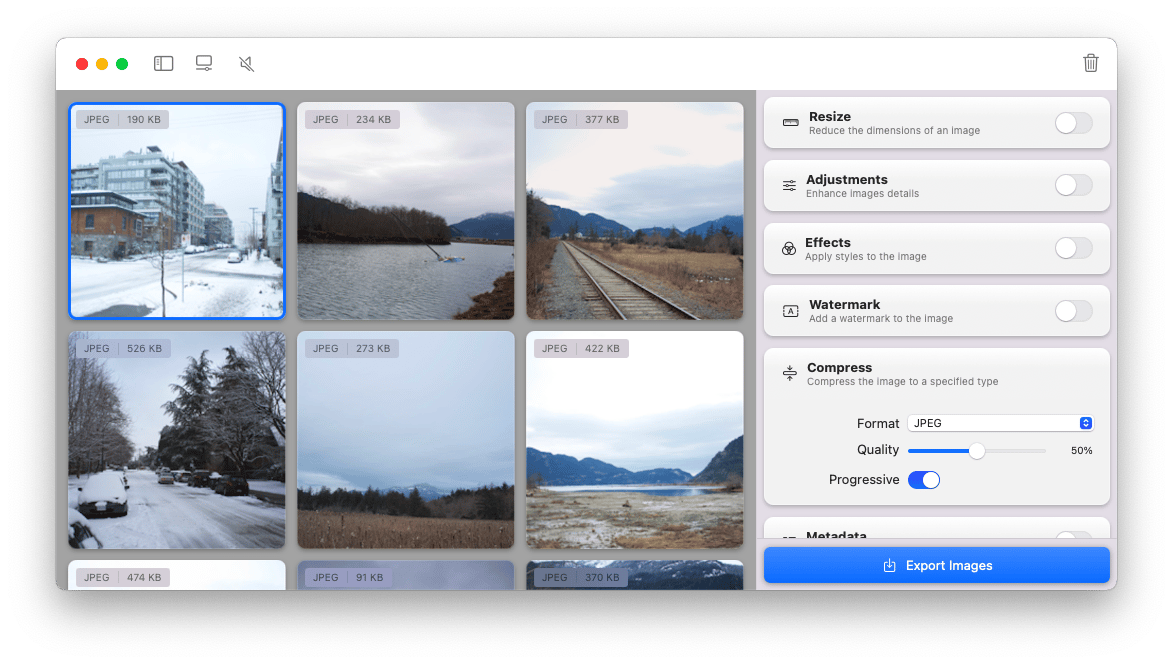
PhotoBulk: Best for mass compression
Another great app I sincerely recommend is called PhotoBulk. The best part about this tool is that it can easily compress images in bulk.
The process is as simple as with Squash. Simply drag and drop the image into the app and check the Optimize box to reduce file size without deteriorating the image.
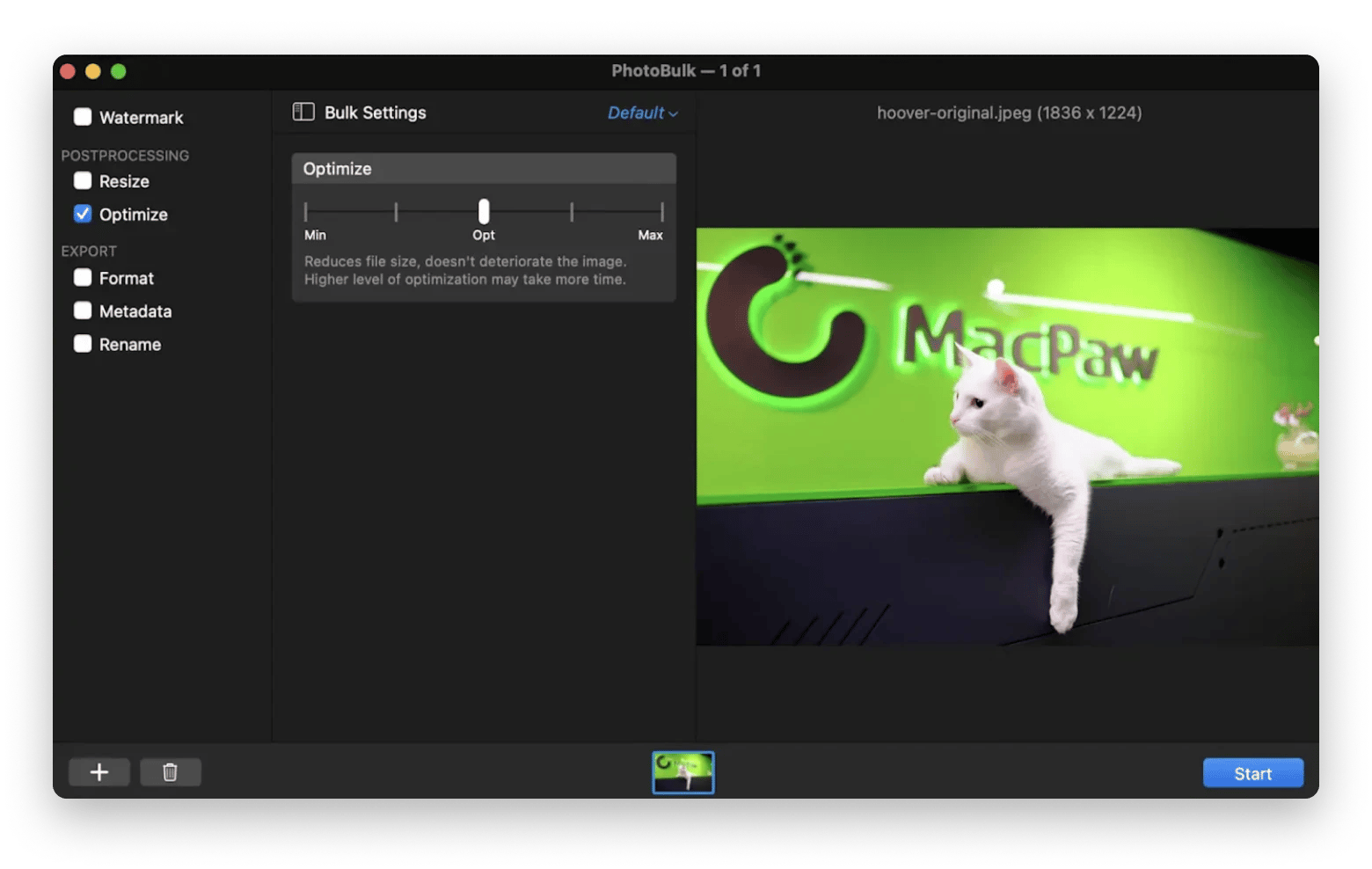
Reduce a picture file size using Preview
Preview is another method I used until I discovered the Squash image file size reducer. To compress an image without losing quality in Preview, follow these steps:
- Double-click the file you want to work with to open it in Preview.
- Then, click File > Export…
- Set the file format to TIFF and the compression to JPEG.
- Click Save.
- After that, open the new TIFF file in Preview. Go to File > Export again.
- Choose Export…, set JPEG.
- Click Save and rename the image if you want.
This way, we reduced the file size, but has the image quality changed after compression?
The picture is clear, high-quality, and not blurred. Well, you can judge for yourself. Just take a look at the screenshot below.
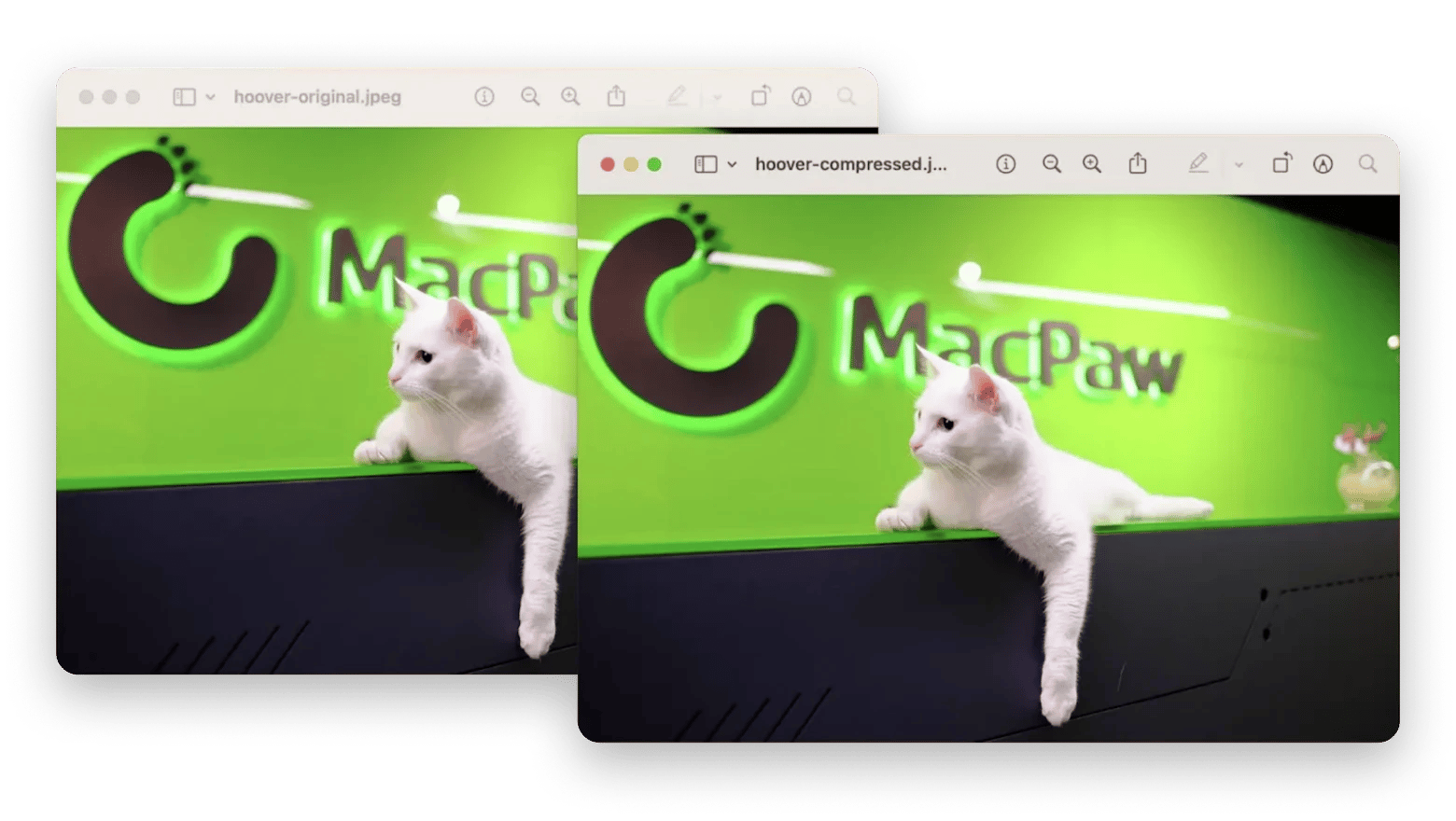
Reduce image size using conversion and optimization
In digital imaging, JPEG and PNG are the most common image formats. At first glance, a single picture shown in both formats might look the same, but if you look closely and dig into the data, you can see that they’re very different. Each format is made to be used in certain situations based on your needs for image quality, file size, and more. This means that one format isn’t always better than the other.
Dealing with image compression, you should know that JPEGs easily lose quality and are best suited for photos and realistic images. PNGs don’t lose quality when they’re compressed, so they’re good for line art and images with a lot of text and fewer colors.
Also, JPEGs contain less data than PNGs – and, therefore, are usually smaller in size.
So next time you compress images, consider the formats. Sometimes, you just don’t need the image to be PNG, and you can reduce its size from MB to Kb by simply converting it to another format. The simplest way to do that is Permute. Here’s how you convert images with this app:
- Open Permute.
- Drag your image into the main app’s window.
- Choose the desired format from the drop-down menu and click Start.
- Click the magnifying glass icon to open the folder containing your new image.
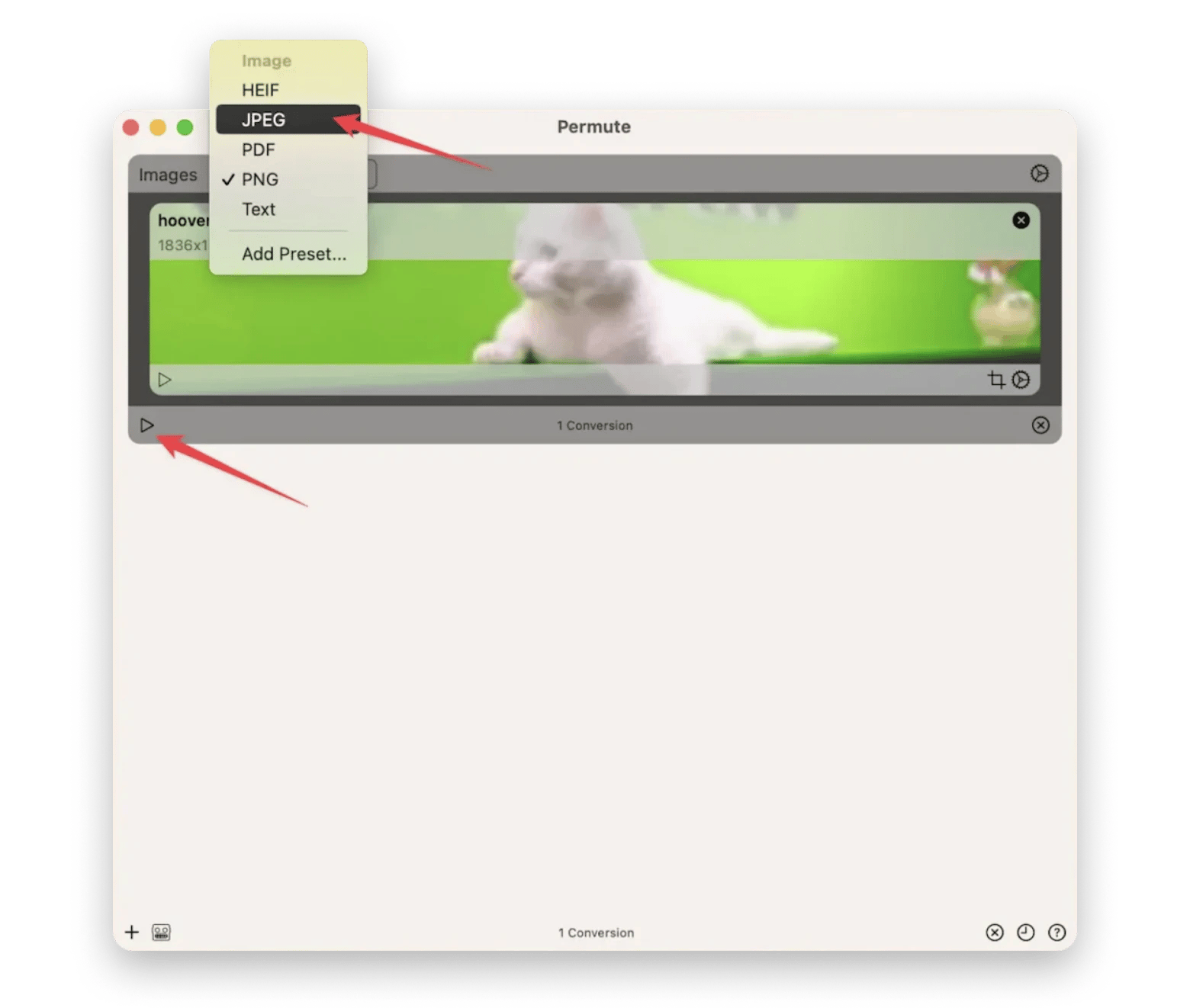
On top of that, you can use the file size restriction option of Permute. Follow the instructions:
- Open the app.
- Go to Permute > Settings > Presets.
- Find the image format you want to use (for example, JPEG) and check the box next to File Size Restriction. Set the desired size and go back to image conversion.
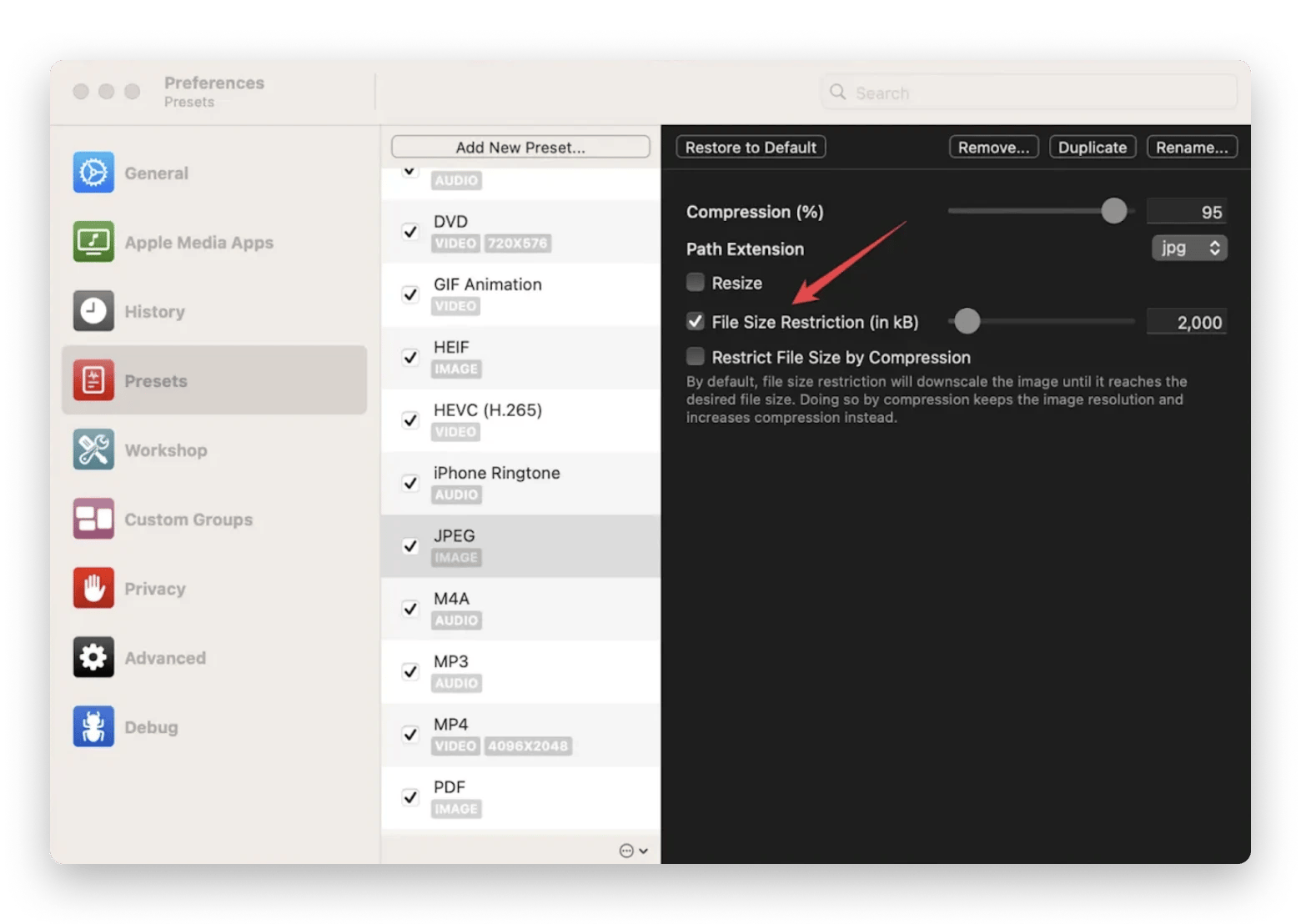
Should you resize images before compressing
By resizing before compressing, you significantly reduce the file size. Compression then further reduces the size to the desired level.
Resizing an image means reducing its length and width, which also reduces its file size. First, decide what dimensions you need, such as the optimal sizes for website images.
I prefer to resize images in batches using the Squash app I’ve mentioned above.
How to compress photos on iPhone and iPad
Now that you know how to reduce file size of photos on your Mac, let’s take a look at how you can do the same on your iPhone and iPad.
Below are the methods I use to decrease the file size of photos on my iPhone.
Built-in editing tools
My first choice is very simple.
- Open the Photos app and select the picture you want to compress.
- Tap Edit and make minor adjustments (e.g.,cropping) to reduce the file size.
- Save the edited image.
This can slightly reduce the file size, but cropping is not always the best option.
Online tools
Visit sites like TinyPNG or JPEG Optimizer using your browser. Upload your image, compress it, and download the smaller version.
Adjust camera settings
Finally, you may want to play with your camera settings to shrink file size.
- Go to the Settings app > Camera > Formats.
- Select High Efficiency to take photos in a smaller file size format (HEIF/HEIC).
These methods make it easy to compress image file sizes on iPhone and iPad and save storage space.
Want to free up storage space on your iPad? Read “iPad storage full? How to free up iPad storage space.”
Shrink image size in KB with online tools
It’s also possible to reduce image size in KB online. For perfectly compressed photos, I prefer the tinyPNG tool. It uses intelligent lossy compression techniques to reduce the file size of your WEBP, JPEG, and PNG files.
Simply drop your files into the selected area, wait a moment, and download the compressed image to your computer.
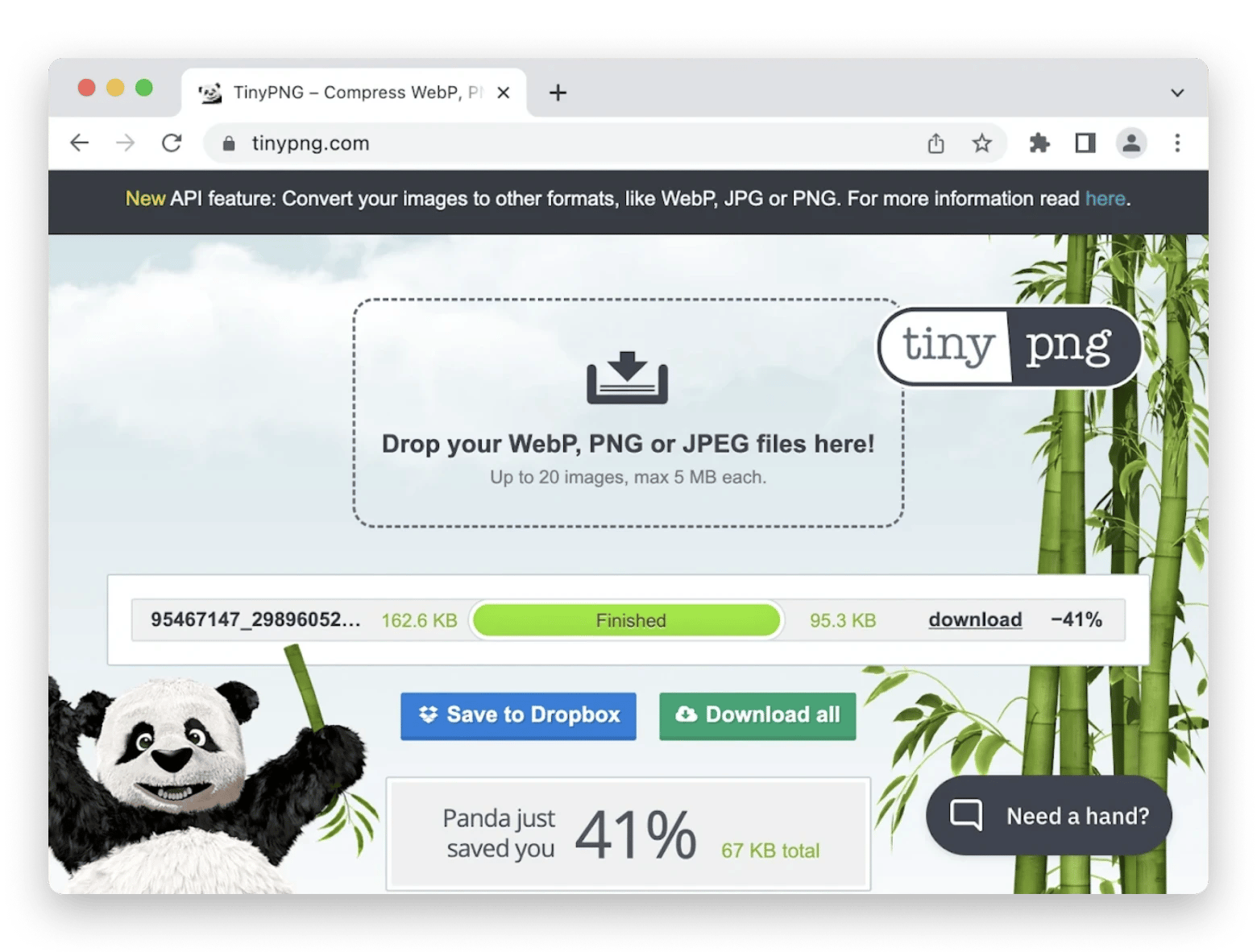
Tools to reduce file size using image compression: Final thoughts
In my experience, Squash is my go-to tool for image compression, which is perfect for quick, high-quality compression tasks.
I also frequently use PhotoBulk for mass compression. Its ability to handle bulk tasks without compromising quality is a big plus.
I tend not to use Preview for image compression because of its limited features and basic compression capabilities. While it gets the job done, it doesn’t offer the advanced options that other tools do.
As for tinyPNG, it’s a great online tool for intelligent lossy compression, but I prefer not to upload all my photos online for security reasons. Still, I use tinyPNG on my iPhone from time to time for quick compression on the go.
As you can see, each tool has its strengths, and you may find that one method suits your needs better than another. But once again, for me, Squash and PhotoBulk remain the favorites.
The best part? You can try Squash plus other apps I’ve mentioned (PhotoBulk, Permute, Gemini, and CleanMy®Phone for seven days at zero cost on Setapp, an app subscription service that hosts dozens of apps for almost any task you can imagine. Give it a try!






